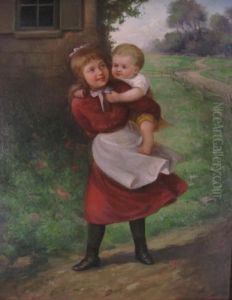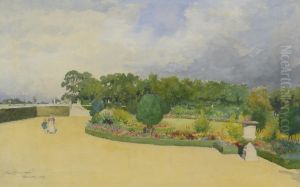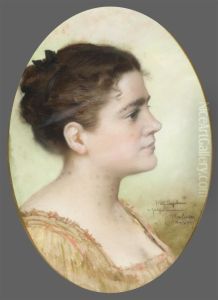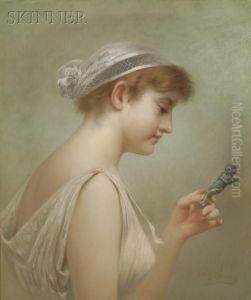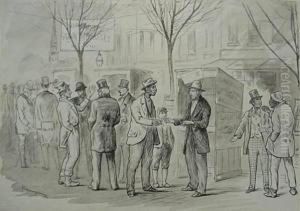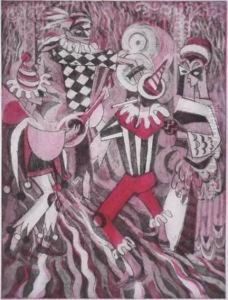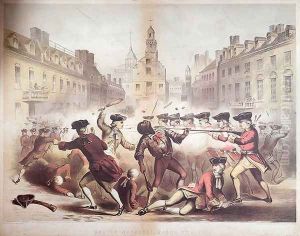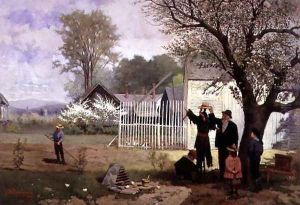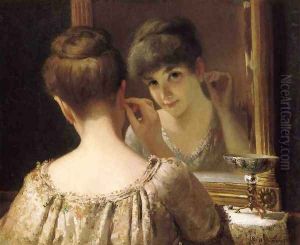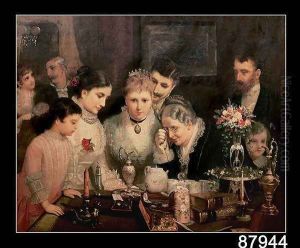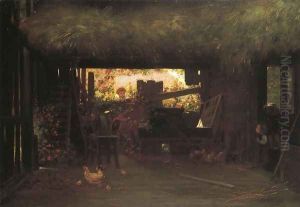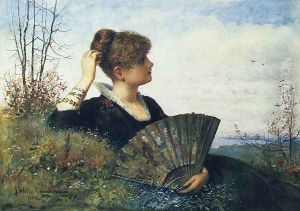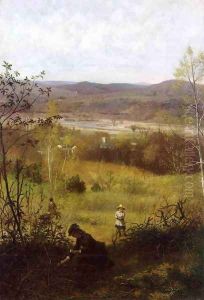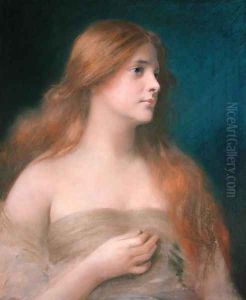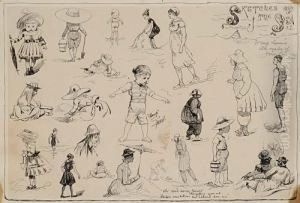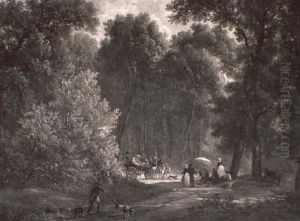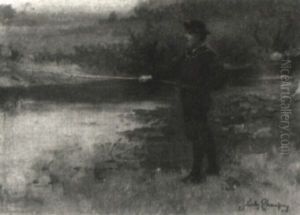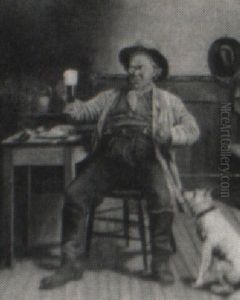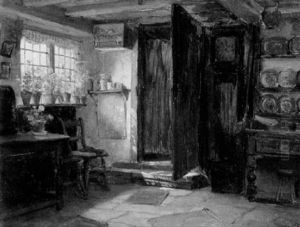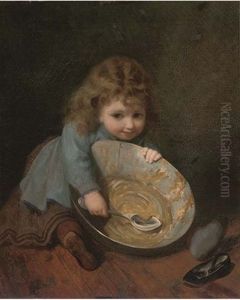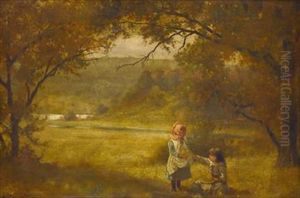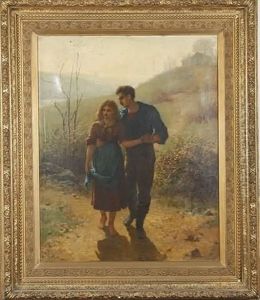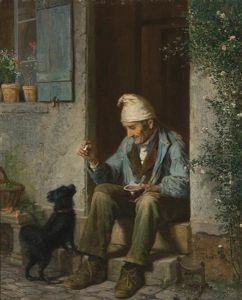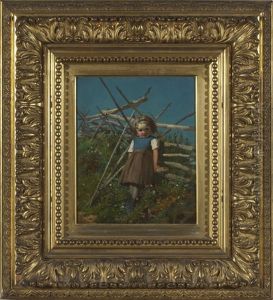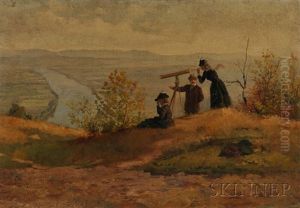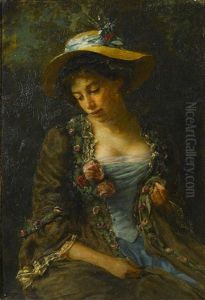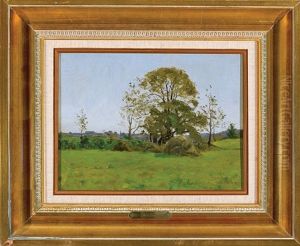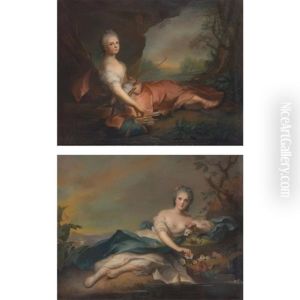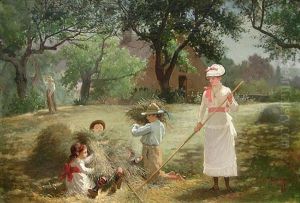James Wells Champney Paintings
James Wells Champney, often known as 'Champ,' was an American genre and portrait painter, as well as an illustrator, known for his detailed depictions of American life in the latter part of the 19th century. Born on July 16, 1843, in Boston, Massachusetts, Champney developed a keen interest in art from an early age. He began his artistic training at the Lowell Institute in Boston and later continued his studies at the National Academy of Design in New York City.
After his initial education, Champney traveled to Europe to further his training, a common practice among American artists at that time. He studied in Paris under the tutelage of Émile Lambinet and also spent time in the artist colonies of Barbizon and Pont-Aven, where he was influenced by the landscape painters of the Barbizon School and the burgeoning impressionist movement.
Champney's work often featured rural scenes, capturing the everyday life of farmers, fishermen, and country folk. He was adept at both oil painting and watercolor, and his illustrations were featured in numerous publications, including Harper's Weekly and Scribner's Monthly. In addition to genre scenes, he also painted portraits of notable figures of his time.
Throughout his career, Champney was an active member of the American art community. He exhibited his work at various institutions, including the Paris Salon, the National Academy of Design, and the Boston Art Club. He was also a member of the American Watercolor Society and the Society of American Artists.
James Wells Champney was not only a painter but also an educator. He taught at the Art Students League of New York and later became a professor at Smith College in Northampton, Massachusetts, where he was instrumental in establishing the art department.
Champney's legacy is preserved in the collections of numerous museums, and his works continue to be appreciated for their historical value and artistic merit. He passed away on May 1, 1903, in New York City. His contributions to American art history, particularly in capturing the essence of 19th-century American society, remain significant.

